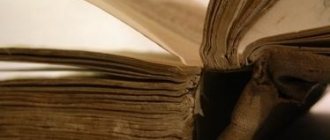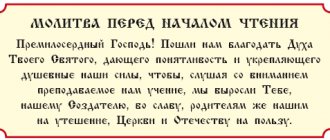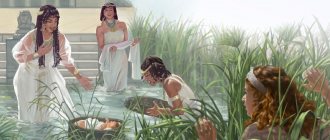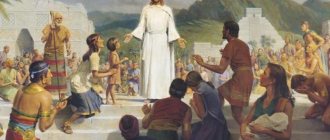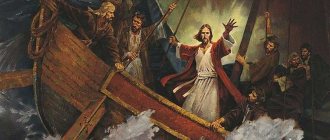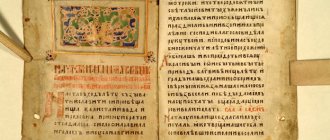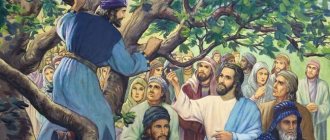The Holy Scriptures of the Old Testament contain a description of a period in the life of the Israeli people, which was reflected in the book of Judges. In particular, it mentions a certain biblical hero - Samson, the son of Manoah.
He was born at a time when the relatively small nation of the Philistines had conquered some of the Israelites' territories.
Judges were those people of righteous life who, according to the special Providence of God for his chosen people, appeared among them at different times.
Who was Samson?
Born according to the promise of an angel of the Lord from a barren woman, Samson possessed extraordinary physical strength. The boy was to abstain from everything that the vine produced and not to eat anything unclean. He grew up in obedience to his parents until the time came to take a wife.
She turned out to be a woman from the enemy tribe of the Philistines, which in itself could not arouse the approval of Samson’s father and mother: she would later betray him by marrying a second time and would be burned in her own home by her own fellow tribesmen. Lustful passion will soon destroy Samson.
[edit] Biography
The name means “solar” (from Hebrew שמש - “Sun”).
Samson was the son of Manoah from the tribe of Dan. His homeland was the city of Tsora. His mother, Hatzlelponi, who came from the tribe of Yehuda, was childless for a long time. The story about the birth of Samson is a characteristic motif about God’s miraculous gift of a son to a barren woman, similar to the stories about Sarah, Rachel, and Samuel. One day, a messenger of God - an angel - appeared to Hatzlelponi and announced that she would give birth to a son, who would mark the beginning of the liberation of the Israelites from the yoke of the Philistines; she must abstain from strong drinks and not eat ritually unclean things (like the Nazarenes); the newborn son must be dedicated to God, and therefore “no razor shall touch his head” (that is, he must wear long hair). The “man of God” repeated the same thing to Manoahu. Manoach's wife gave birth to a son, whom she named Shimshon.
When Samson matured, he fell in love with a Philistine girl who lived in the city of Timna. Accompanied by his parents, he went to Timna to ask for his beloved's hand in marriage. When he, ahead of his parents, reached the “vineyards of Timna,” he suddenly saw a roaring lion in front of him: Samson grabbed the lion with his bare hands “and tore him apart like a kid.”
Samson received the consent of the girl and her parents, and a wedding date was set. At a certain time, he again went to the Philistine city to celebrate the wedding. Near the city, Samson turned off the road to see what happened to the killed lion; to his surprise, he saw that a beehive with honey had formed in the lion’s corpse. Having collected handfuls of honey, Samson gave it to his father and mother, without saying, however, where he got it from. Samson arranged a wedding feast in the bride's house, to which, according to custom, 30 young people were invited as companions of the groom. During the feast, Samson offered the guests a riddle, having agreed with them that if they guessed the meaning of it during the 7 days of the wedding celebration, he would give them 30 cloaks and the same number of changes of clothing; otherwise, they must deliver the same items to him in the same quantity. The condition was accepted, and Samson said a riddle: from the eater came the poisonous, and from the strong came the sweet. When all the efforts of the young Philistines to solve the riddle remained in vain, they turned to Samson’s wife with the demand that she find out the meaning of the riddle from him, threatening otherwise to destroy her entire family with fire. Samson could not resist the tears of his young wife and revealed to her the meaning of the riddle. She immediately conveyed this to the young men. They came to Samson with an answer that succinctly read: what is sweeter than honey, and who is stronger than a lion? Samson went to Ascalon, killed 30 people there, took their clothes and fulfilled his promise.
Samson became angry with his wife and, leaving her, returned to his homeland. Her father soon gave her to one of Samson’s friends.
When Samson’s anger subsided and he returned to his wife with a gift in the form of a kid, her father did not allow him into her room, telling him that she already belonged to someone else and now he was ready to marry Samson’s younger, more beautiful daughter. Samson left in anger and decided to take revenge on the Philistines for the insult they had caused. Having caught 300 foxes, he tied them with their tails in pairs and tied a burning brand to each pair. The foxes ran away and set fire to the fields, vineyards and gardens of the Philistines.
Samson's ex-wife and her father paid for this misfortune - the angry Philistines burned them. In retaliation for this, Samson decided to inflict a strong defeat on the Philistines - he settled in the gorges of the Etam rock. The Philistines, wanting to free themselves from such a dangerous enemy, invaded Judea, demanding the extradition of Samson. Then 3 thousand Jews went to Samson’s hideout and convinced him to allow himself to be tied up.
A cry of joy spread throughout the Philistine camp when they saw the terrible Samson tied up. But their joy was premature. Samson easily broke the bonds and, grabbing the jawbone of a donkey, killed a thousand Philistines with it. Exhausted from intense thirst, Samson turned with prayer to Yahweh, who performed a miracle by opening a source in the recess of his jaw.
Samson became a judge of Israel and ruled for 20 years.
Unable to overcome his natural lust, Samson spent a lot of time with women[3], “following his eyes,” that is, he gave free rein to his passion[4].
For the second time, Samson’s weakness for women almost killed him. One day Samson, while in Gaza, visited a woman of easy virtue. The Philistines, having learned about this, surrounded the city on all sides, and set up an ambush near the city gates. Samson got up at midnight and, passing by the gate, tore it out along with the jambs and the bolt and carried it on his shoulders to the top of the mountain near Hebron (the highest mountain in Judea).
Soon Samson again fell in love with a Philistine woman named Delilah. Seduced by the huge sum that the Philistine princes promised her if she found out what the secret of his strength was and handed him over into their hands, she began to beg him to reveal to her the source of his strength. She eventually managed to extract the secret from him that his strength lay in his hair, which he never cut, since he was dedicated to God from birth. Having put him to sleep, she allowed him to cut off the seven braids in which he braided his hair. Then the powerful force left him, and he became an ordinary person. The Philistines captured him, gouged out his eyes and sent him to Gaza, where he was thrown into prison and had to turn millstones there.
While Samson was in prison, many Philistines brought their wives to him so that they could conceive from him and give birth to a hero similar to him[5].
But one more time Samson dealt a heavy blow to the Philistines, which, however, resulted in his death. The Philistine princes gathered for a solemn holiday in the sanctuary of Dagon, their god, to celebrate the victory over a dangerous enemy. During the celebration, they decided to call Samson so that he would amuse the people. They brought him and placed him between the pillars that supported the building. The house was full of men and women, there were about three thousand people on one roof. He asked his guide to release his hand and let him feel for the pillars to lean against. Having offered a short prayer to God - to give him the strength to “take revenge once for both eyes,” he, with the words “let me die along with the Philistines,” grabbed the two middle pillars and leaned against them with all his strength (the strength partially returned to him, since his hair became grow); the pillars gave in and the house collapsed, burying all the participants in the celebration. “And the number of those he killed at his death was more than he killed during his life.”
Relatives buried Samson's remains in his father's grave, which was located between Tzorah and Eshtaol.
Samson and Delilah
He possessed amazing power, the secret of which the Philistines did not know. Samson inflicted such loud defeats on them over and over again that the enemies resorted to meanness: Delilah, Samson’s beloved woman, was persuaded to reveal the secret.
P. P. Rubens. "Samson and Delilah", 1609
For her betrayal, she received almost sixty-three kilograms of pure silver. It turned out that the power lay in long hair: Samson was a Nazirite and vowed to the Lord never to cut his hair.
While sleeping in Delilah's house, his hair was secretly cut off, and Samson himself was chained and subjected to ridicule and humiliation, taken to Gaza to the house of prisoners.
Film adaptations
In 1963, the film “Hercules vs. Samson” was released in Italy, where freely interpreted biblical and Greek myths intersected. The role of Samson was played by actor Ilosh Khoshade.
Ilosh Khoshade as Samson
Samson is presented here as a rebel and leader of an anti-state movement, who is hiding from the authorities in a small Jewish village. The Greeks Hercules and Odysseus end up in this village after they and their crew are carried to the shores of Judea. The Greeks' ship has been wrecked and they want to return home.
Samson is being sought by the royal soldiers, and Hercules, hurrying with his comrades to the capital to get a ship there, is accidentally mistaken for Samson. This happens because Hercules, in front of a local merchant, kills a lion with his bare hands - Samson accomplished the same feat, and everyone knows this.
Rowan McNamara as Samson
The merchant reports “where he should”, and in the capital Hercules’ companions are taken prisoner, and the Greek hero is ordered to go and find the real Samson, since he claims that he himself is not Samson. Queen Delilah goes on a search with Hercules.
When Hercules finds Samson, a skirmish occurs between them, but in the end the equally powerful fighters strike up a friendship and decide together to overthrow the king in Judea. Delilah, having reached the capital before the heroes, “surrenders” them to the king, and an army awaits Hercules and Samson on the approaches to the capital.
In 2009, the melodrama “Samson and Delilah” was released in Australia. The film does not directly reproduce the biblical story; it is rather an allegory. About social issues that arise in Aboriginal communities in Australia.
Taylor James as Samson
The main characters - teenagers Samson and Delilah - live in poverty. After the villagers beat Delilah with sticks, they flee to the city. There, the fate of the heroes does not improve, no one pays attention to homeless teenagers, and they do not know how to make money. After difficult trials, the heroes return back to their native village. The role of Samson in this film is played by Rowan McNamara.
In 2021, the American action film “Samson” will be released, a spectacular adaptation of the biblical myth, where the hero will be played by actor Taylor James.
Samson tearing the lion's mouth
Samson's life is full of unusual events: for example, on the way to the city where the bride was from, the travelers met a lion, which was torn to pieces by Samson.
Luke. "Samson and the Lion", 1696
Later, the young Jew returns to the lion's decaying corpse, where he discovers a swarm of bees; He will eat the honey himself and take it home to his father and mother.
Blinding of Samson
He was completely blinded, moving everywhere with a guide boy. One day, the pagan Philistines, on the day of the celebration of the memory of Dagon, brought Samson to their meeting, subjecting him to special mockery.
P. P. Rubens. "The Death of Samson", 1605
By that time his hair was gradually growing back, Samson himself bitterly mourned his fornication. He asked the guide to lead him to two large columns on which the main part of the building rested, as if wanting to make sure of their strength.
Calling on God, Samson broke the chains with which he was bound and brought down the building, killing a large number of Philistines. He himself also died under the rubble. Samson was buried next to his father.
Sculpture of Samson
In 1735, in Peterhof, in memory of the victory of Russian weapons over Sweden, a fountain was installed depicting the biblical Samson tearing the jaws of the Lion.
Everything here is significant: the Poltava victory was won on the day of memory of the Monk Samson the Host, and the coat of arms of the Swedish state was decorated with a lion. The following prominent specialists took part in its creation: Rastrelli, Zemtsov, Sualem, Voronikhin, Kozlovsky.
For various reasons, the material from which the composition was made changed. At first it was lead, then bronze, after the Great Patriotic War - bronze again, but the lost figure had to be restored using drawings and photographs.
The last restoration of the famous fountain took place in April two thousand and eleven.
Examples[edit]
Religion, mythology, folklore[edit]
- Bible: Actually, Samson, tropnamer and codifier. However, just by the standards of modern morality, he looks very ambiguous. And even according to the law of Moses he was not without sin. But incredibly cool! And his hair matches his strength; moreover, according to the Bible, his strength is in his hair. Justify the theologically: Samson had to fulfill the Nazarite vow for life, one of the conditions of which was not to cut his hair (cf. modern Sikhs in India), for which God gave him strength, but through negligence he broke the vow - his strength left him. Justify the materialistic one: the legends about the folk hero were superimposed with the symbolism of solar myths - the hair depicted rays emanating from the sun, and the name Samson (Shimshon) itself comes from shemesh
“sun”. - King David. In addition to its coolness, it also stood out for its beauty. And his numerous heroes: Benaiah the son of Jehoiada, Abishai the son of Zerui, and others (see 1 Chron. 11 and 2 Kings 23).
- Apostle Peter, who denied Christ three times, but atoned for his guilt through deeds and martyrdom. And, judging by the Scriptures, his temper was tough - for example, during the arrest of Jesus, he cut off the ear of a temple slave.
Literature[edit]
- Ostap Bender! Cool is primarily a cunning and charismatic character, but has a masculine appearance and great physical strength, is clearly not a coward, and fits the trope quite well.
- Nikolai Ostrovsky, “How the steel was tempered.” “In the house of the blacksmith Nahum, the jackals who rushed at his young wife Sarah received a brutal rebuff. The athlete-blacksmith, filled with the strength of twenty-four years, with the steel muscles of a hammerman, did not give up his girlfriend.”
- Vladimir Kunin, “Ivanov and Rabinovich, or “Ay go to Haifa”” - Aron Moiseevich Rabinovich, a simple worker at an automobile manufacturing plant.
- Ivan Koshkin, “Ilya Muromets” - Jewish hero Samson. He is brave, noble, powerful and does not at all correspond to anti-Semitic stereotypes (in one episode he even outright refuses to engage in trade).
- Ilya Gutman, who himself is, yes, “The Restless”. The very use of the trope together with the indication of the character is already a severe spoiler.
- Christopher Moore, "The Lamb: The Gospel According to Shmyak, the Childhood Friend of Jesus Christ" is the title character. In contrast to his pacifist friend, he is a kung fu master who will always willingly punch a bad person in the face. But Jesus is not going to become the Samson-like King of the Jews, no matter how much they push him to do so.
- Sergei Klochkov, “Lun” (part of the STALKER literary cycle) - Zionist stalker. A veteran of the Zone, who traveled its length and breadth. At the same time, in appearance and behavior he is a typical intelligent Jew. But even the experienced protagonist has no doubt about his coolness. The story of how he got his nickname is also indicative: “They said that at the dawn of his stalker career, an intelligent, silent Zionist single-handedly crushed the teeth of three bullish newcomers from the former “skins” who decided to cling to him on the way out of the bar. One of the victims, feeling his broken nose, then hissed through his teeth: “Here, guys, this is the Zionism that I was talking about with you,” adding several obscene expressions. They don’t choose names.”
- Boris Akunin, “Pelagia and the Red Rooster” - the leader of the Zionists, nicknamed Magellan.
- Leon Uris, “Exodus” - Ari Ben-Canaan and many other heroes - Palmach fighters.
- 87th Precinct - Mayer Meyer. A brutal, bald, tough policeman and a real stoic by temperament (the only thing that can piss him off is pedophiles (since he is raising his daughter himself)).
Cinema[edit]
- Samson is one of the four canonical heroes of the classical Italian peplums, along with Hercules, Maciste and Ursus.
- “Inglourious Basterds”: the Nazi menace Donnie Donowitz, nicknamed the “Jew the Bear,” knocks out the brains of captured Krauts with a bat. The pedal goes into the mantle of the planet when, at the end of the film, he personally kills Hitler and the rest of the top of the Reich (although he himself soon dies in an explosion).
- “Don’t joke with the Zohan” - actually, Zohan, an absurdly cool Israeli commando who loves (in all poses) older women (but the final lady of his heart was a young Palestinian).
- "Munich" - Avner Kaufman, head of the MOSSAD cell following the trail of Black September militants.
- Red Sea Diving Resort - Ari Levinson and Jake Wolf.
TV series[edit]
- “Liquidation” - David Gotsman, a police lieutenant colonel and the threat of the criminal world, who went through the war as a member of the Marine Corps.
- “The Life and Adventures of Mishka Yaponchik” - the title character performed by Evgeniy Tkachuk.
- Fauda from Netflix is the protagonist Doron, an operative of a secret special forces unit of the Israeli secret services, hunting for a Hamas militant nicknamed “Panther”, and his colleagues (halfway with a completely different trope).
Animated series[edit]
- “Family Guy” - it turns out that the reason for Adolf Aloizych’s anti-Semitism was a jock-Jew, on whom women almost hung themselves.
- The Incredible Hulk and The Avengers: Earth's Mightiest Heroes - Doc Samson, aka Dr. Leonard Skivorski. Thanks to gamma energy, he has enormous physical strength, agility and endurance, he is bulletproof, but in general he is really a doctor and a pacifist by conviction.
Comics[edit]
- “Living with a Woman,” painted by Yehuda Devir, is about his wife Maya and life with her. In addition, he himself is a pumped-up fanservice bearded man.
Video games[edit]
- Wolfenstein (new) - Seth Roth calls BJ "Shimshon". And in New Colossus it turns out that BJ does.
- The character from The Binding of Isaac is called Samson. Hair and beating with a donkey's jaw[2] included.
Music[edit]
- Konstantin Belyaev, “Couplets about Jews” - it turns out that Ilya Muromets was also there! A parody of one neo-pagan theory.
- Desert - "Son of a Star".
Real life[edit]
- Judas Maccabee, who led the most famous uprising of the Jews against the Greeks and restored the Jewish Temple, in honor of which the Jews celebrate Hanukkah.
- Shimon bar Kochba, who led the Jewish uprising against the Romans. According to some historians, he even managed to be the king of independent Judea for several years.
- Joseph Vladimirovich (Wulfovich) Trumpeldor lost his left arm in the battles of the Russo-Japanese War, but did not want to demobilize. Later he went to Palestine and organized Jewish self-defense units. Killed in battle with the Arabs.
- Many Jewish fighters of the Red Army, Allied armies, as well as resistance movements in different countries during World War II. Perhaps they deserve special mention: Alexander Pechersky - the organizer of the only
successful uprising in a Nazi death camp (two films were made about him - the British "Escape from Sobibor" and... eh... our "Sobibor"). - Caesar Lvovich Kunikov, commander of the landing detachment that captured the Malaya Zemlya bridgehead, Hero of the Soviet Union.
- Joseph Abramovich Rappoport is a Soviet geneticist and veteran of the Great Patriotic War.
Rembrandt: Samson and Delilah
Almost a century earlier, in one thousand six hundred and thirty-six, the artist from Holland Rembrandt painted a canvas that became famous throughout the world called “The Blinding of Samson by the Philistines.”
It should be noted that Rembrandt is not at all a pioneer in this subject in a broad sense. He was the first to draw attention to the tragic moment of Samson's blindness: here is the evil triumph of the enemies, and the helplessness of the main character of the picture, and the joyful betrayal of Delilah herself. This work will open the way for Rembrandt to high orders.
Currently, the canvas is exhibited at one of the university art exhibitions in the city of Frankfurt am Main.
What does the biblical story of Samson and Delilah teach?
Many people believe that the story of Samson and Delilah is a story of betrayal, however, this is a mistaken opinion. The motif of betrayal is indeed quite common in the Bible. You can, for example, recall the betrayal of Judas Iscariot, the story of Joseph and his brothers, etc. But, although this motif can be traced in the legend of Samson and Delilah, it is not the main one here.
One of the most important lessons we can learn from the biblical legend of Samson and Delilah is to learn to control our emotions and not let our emotions control us. The desire for revenge and the feeling of rage are what actually destroyed Samson.
Samson died because he allowed his emotions to control his behavior. He killed the Philistines out of anger and revenge. We have no right to kill or harm because we cannot control our anger. Justice must be in the hands of God. Samson fought the Philistines for twenty years. He killed many and destroyed many things. He was angry and his anger was distracting him from God's plan for him. The mission that God had entrusted to him became his personal battle, he was already fighting for himself, following his own anger, his own passions. Revenge became a powerful and consuming force in Samson's heart and changed the direction of his life.
The blindness of Samson described in the Bible is nothing more than a symbolic description of his spiritual blindness. It is not clear at what exact moment Samson stopped following the path of the Lord, but followed the path of his own revenge, using the power that the Lord gave him.
